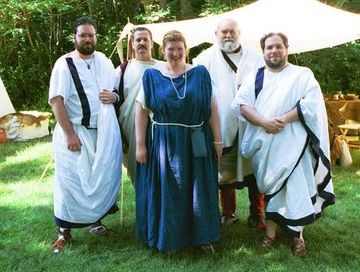Consul overview
Home | Latíné | Deutsch | Español | Français | Italiano | Magyar | Português | Română | Русский | English
⚜⚜⚜ Site Index - Key Pages ⚜⚜⚜
Overview of "Consules"
The Consules were the highest civil and military magistrates, being both heads of state and heads of government.
| |
|
Consules in Roma Antiqua
After the expulsion of the last of the seven legendary kings of Rome, Tarquinius Superbus in 510 BC, two consules were elected annually by the comitia centuriata. With equal power they shared the full civil authority in Rome and the chief military command in the field and their names were used to date the year. Consules were "curule magistrates" and had imperium. They were accompanied by twelve lictors. Consules convened and presided over the Senate and they saw to the execution of its decrees. They also convened and presided over the comitia centuriata and comitia populi tributa, conducting elections and putting legislative measures to the vote. Learn more...Selected links (Roma Antiqua)
Selected photo
 At Roman Days MMDCCLV, the consul maior of that year (1) and three past consuls (2 3 4) pose with Senatrix Patricia Cassia |
Consules in Nova Roma
One of the magistracies of Nova Roma. There are two Consules Consules of year 2761: Vide: Officina Consulum MMDCCLXI The domain of authority of the consules includes:
Selected links (Nova Roma)
Past Consules in Nova Roma
Nova Roma Consuls: Past Offices: |
Consules projects
==Wiki projects==
| |